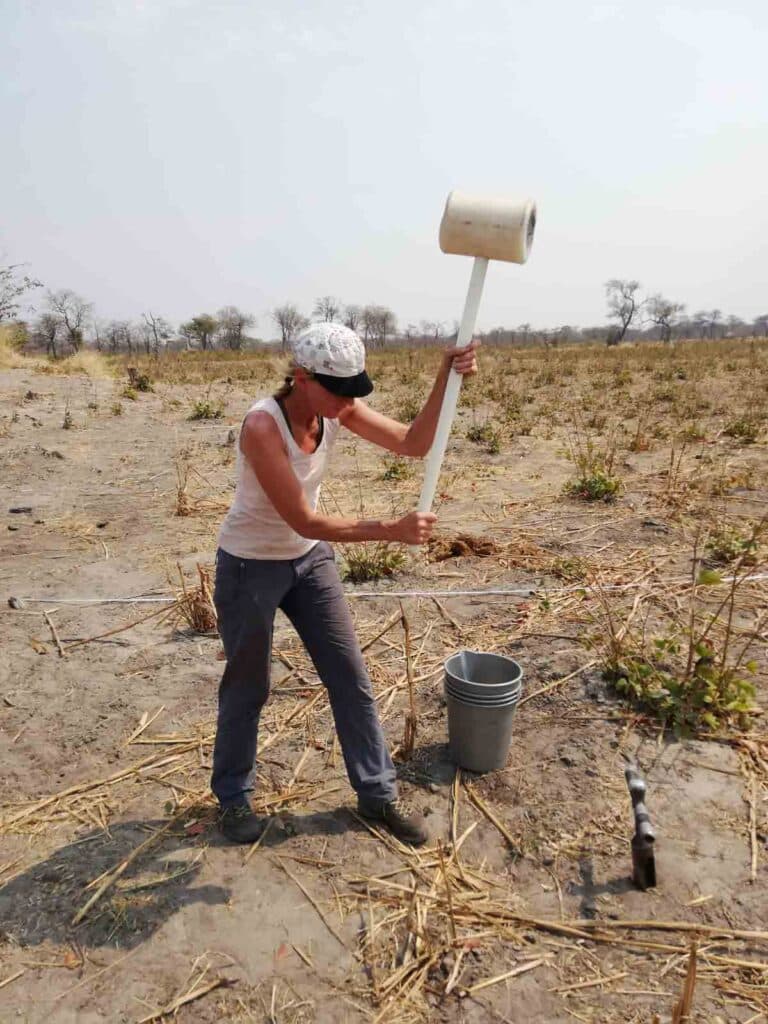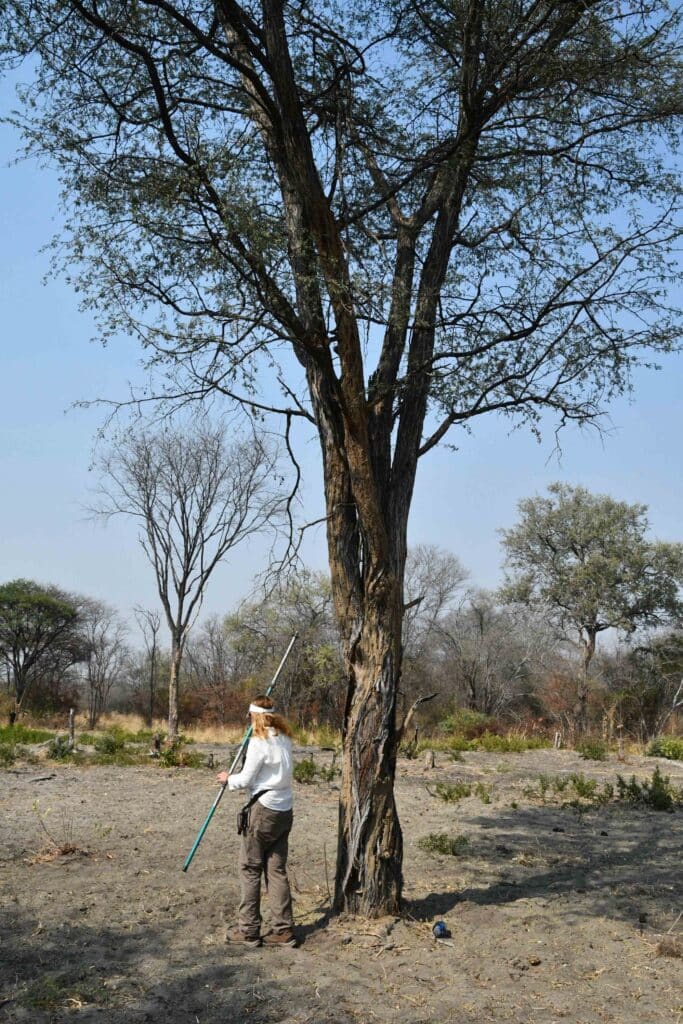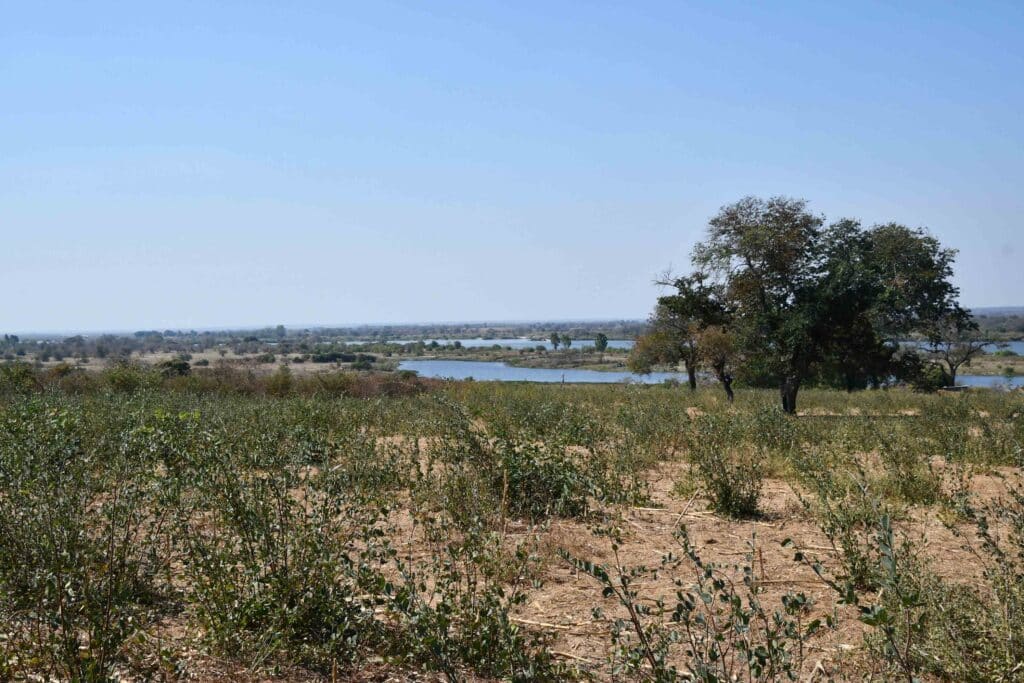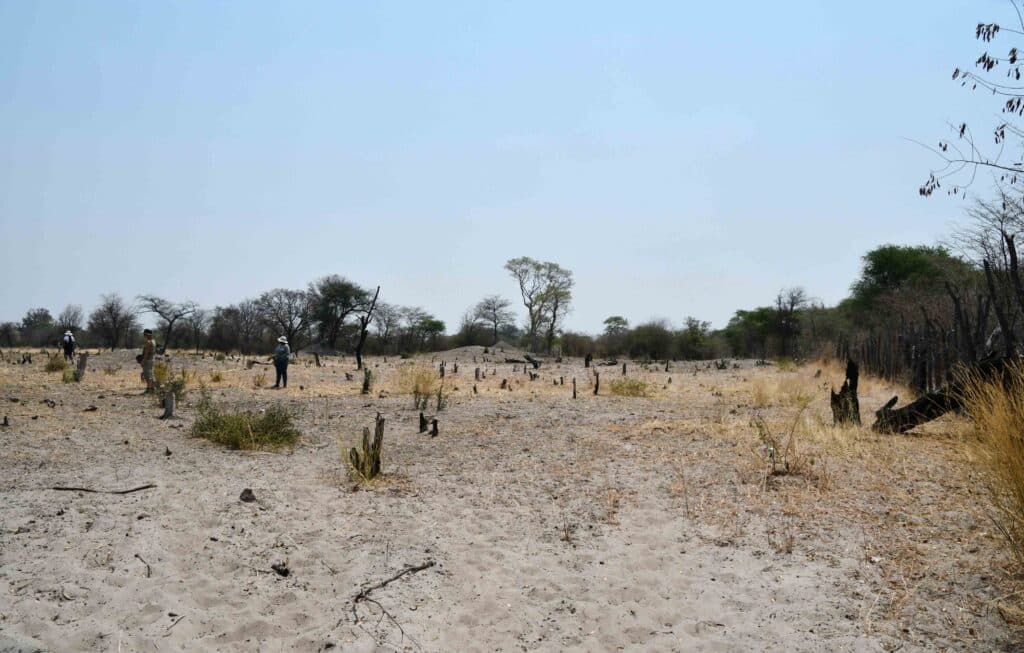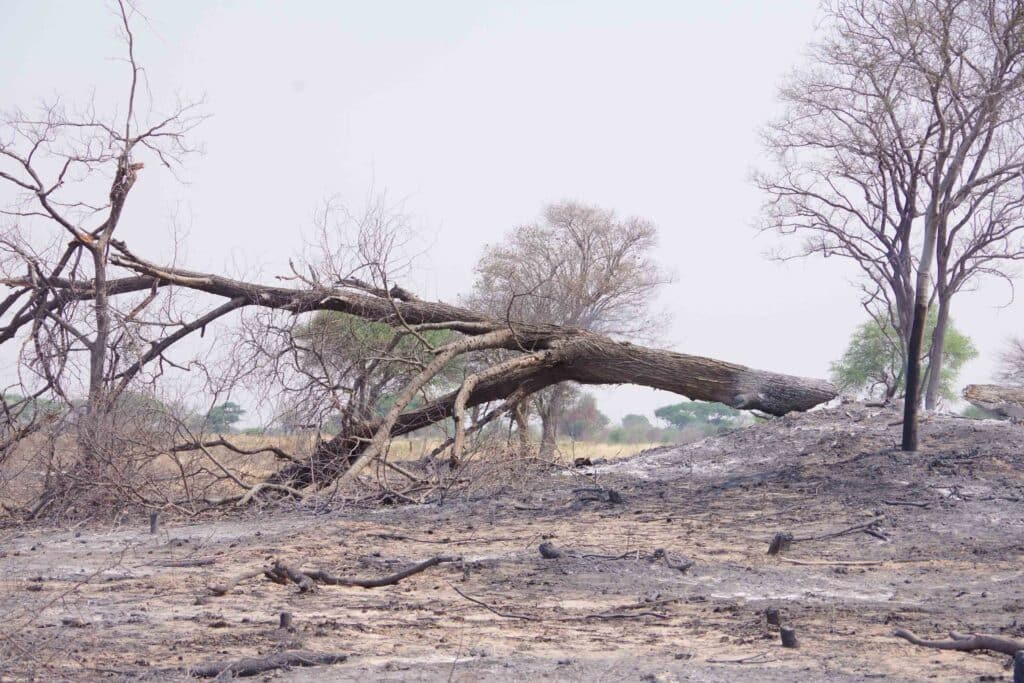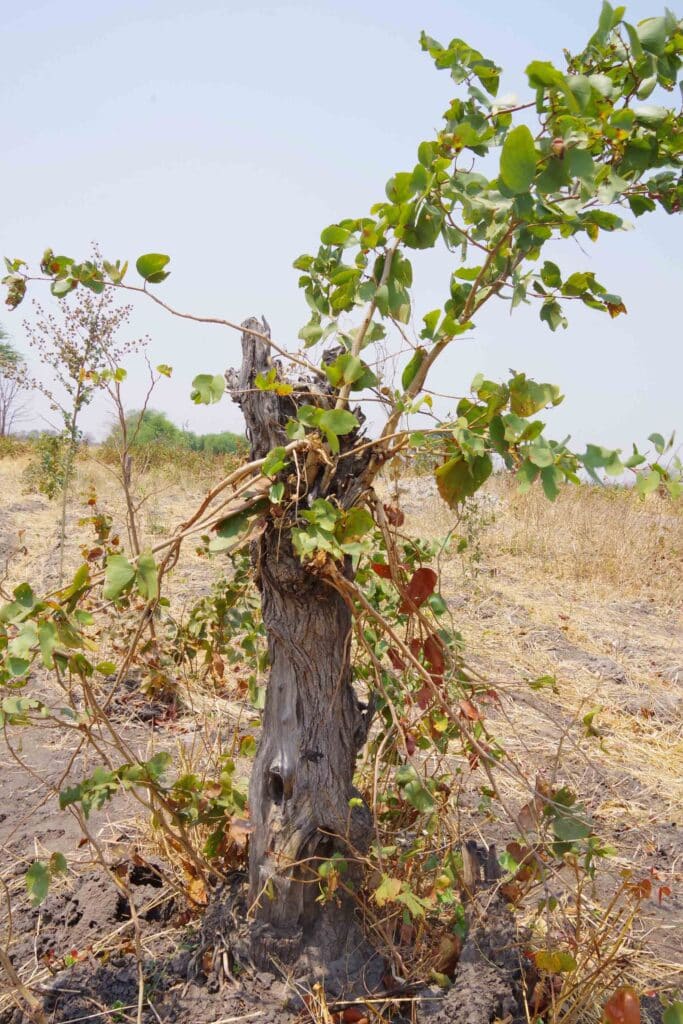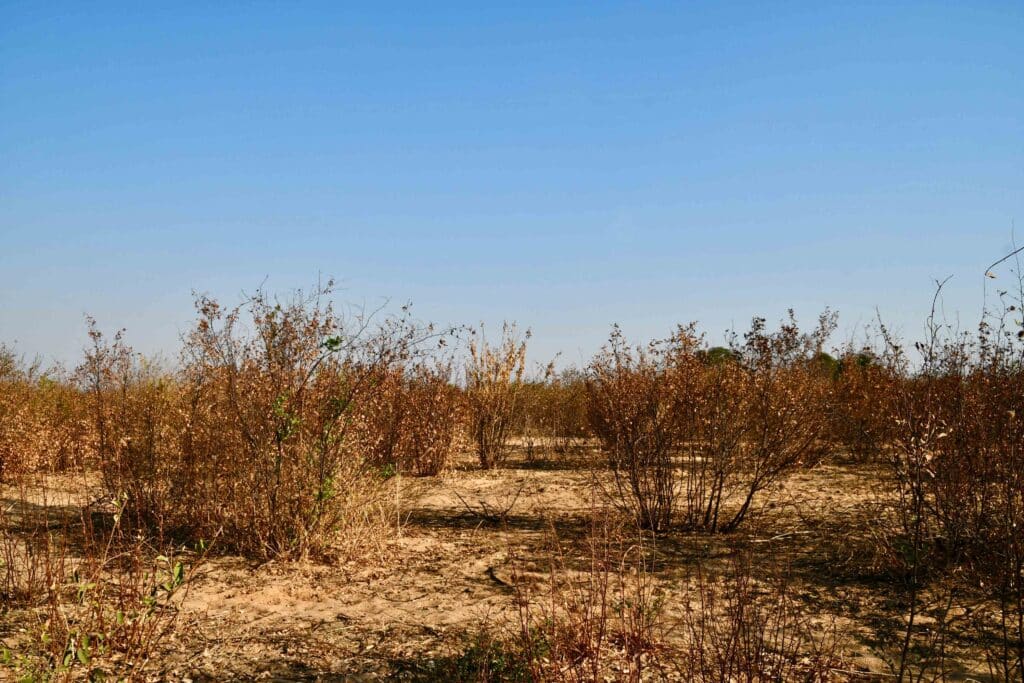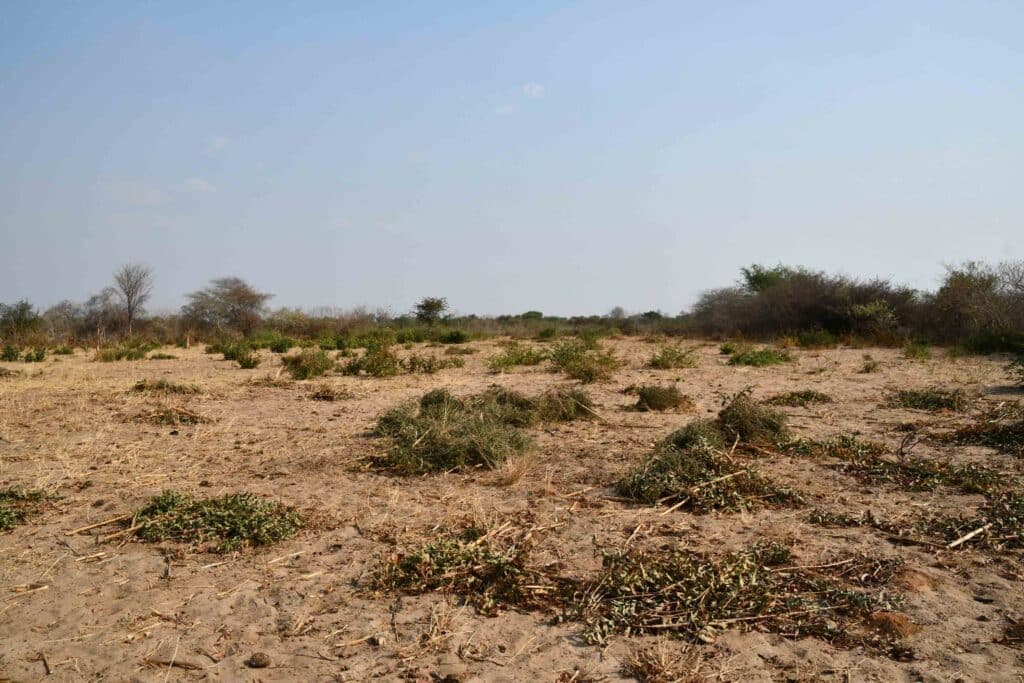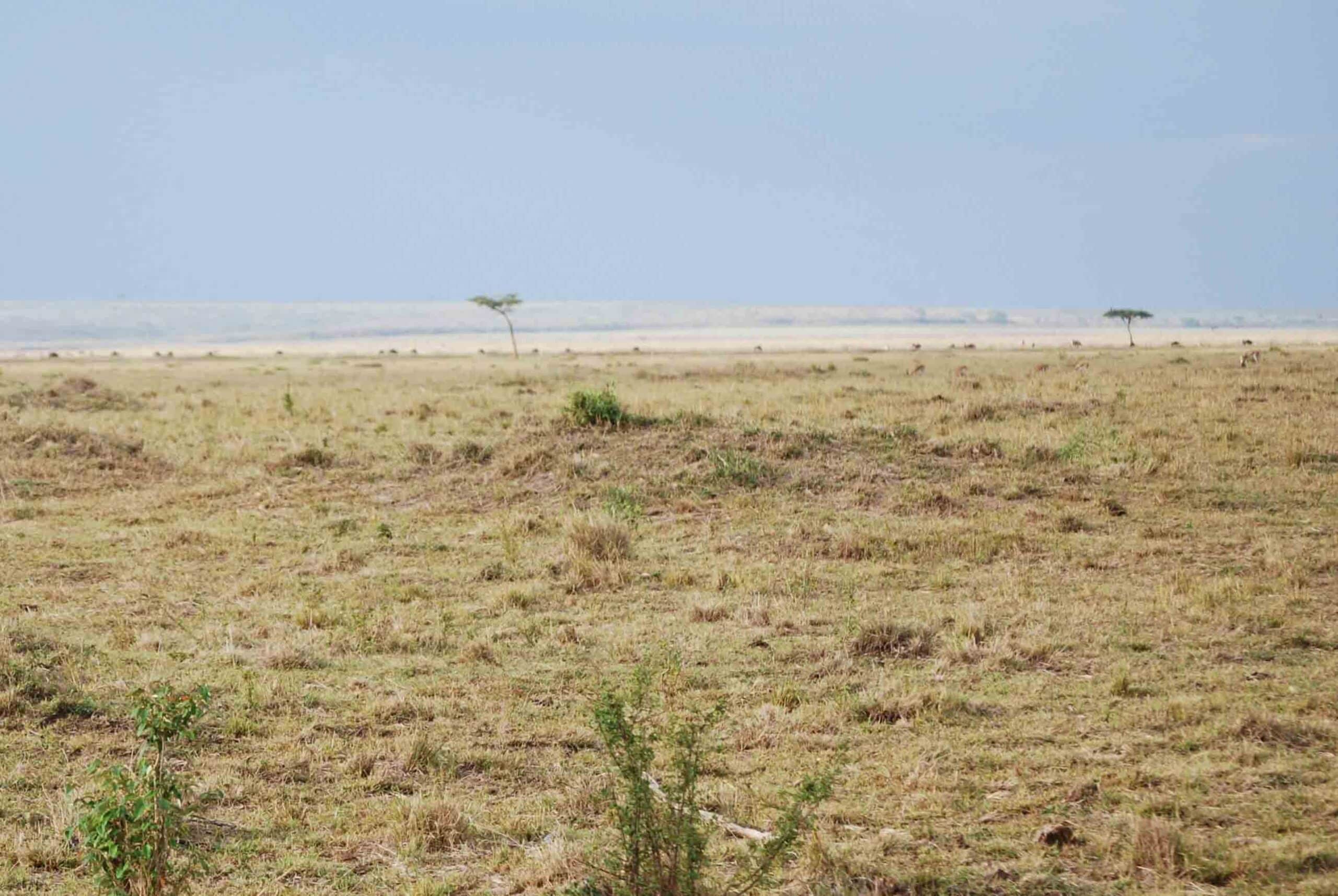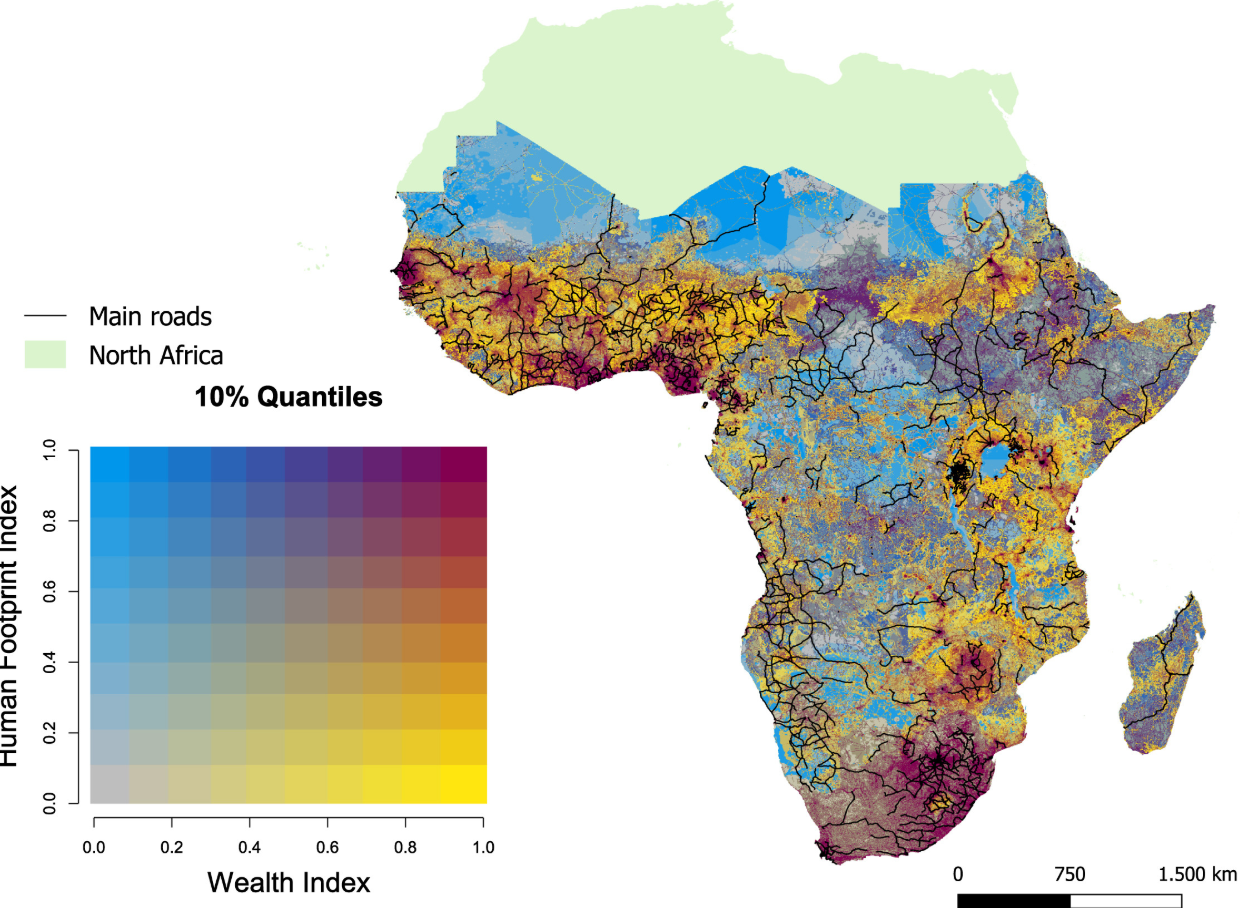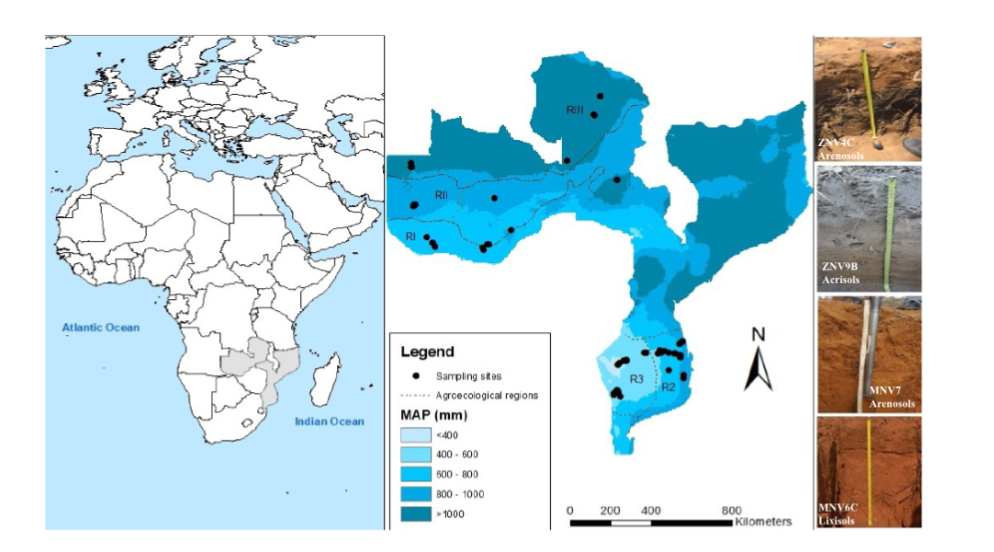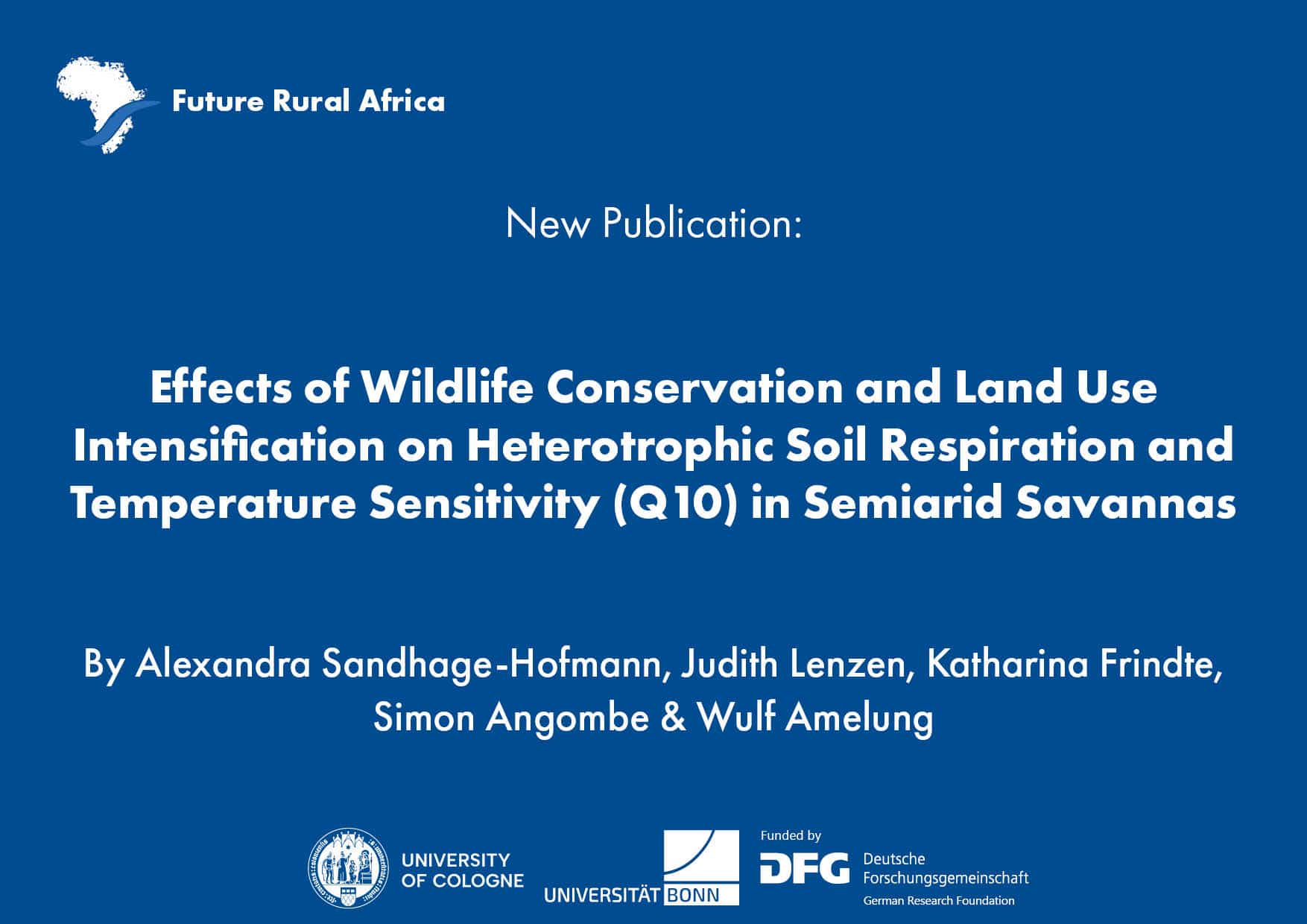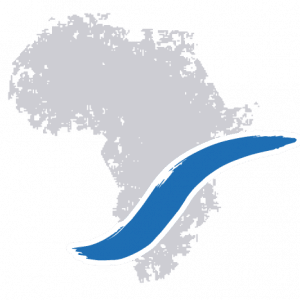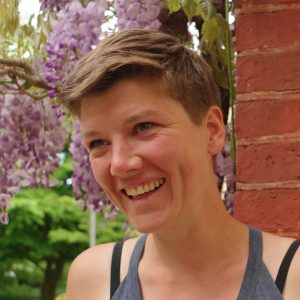CRC TRR 228 Project A01
Future Carbon Storage
Synergies and trade-offs of carbon storage along pathways of land transformation
A01 Future Carbon Storage
Vision
Improve our understanding of how heterogeneous patterns of rural wealth interact with the natural resource base, and to what extent environment constrains future development possibilities.
Project Summary
This interdisciplinary project continues to view the future-making in rural Africa through a carbon lens, focusing on two conflicting visions: wildlife conservation and agricultural intensification.
During Phase I, we have used space-for-time substitutions and combined biophysical and socio-economic data at different scales to analyse effects of conservation and intensification on (1) carbon-stock dynamics in soil and vegetation and carbon-related ecosystem services, (2) the composition of farm-household income, including detailed environmental sources. At the local scale of ecological observation plots we were able to show that carbon losses in the vegetation due to increased densities of large herbivores can be offset by carbon gains in soils. Surprisingly, soil carbon stocks under agriculture were not smaller than under conservation. This phenomenon may be driven by two aspects of farmers’ future-making: a future-oriented soil fertility management, and a preferential selection of fertile land for agriculture. The implications for respective social-ecological coupling will be further explored in Phase II. At the regional scale, we found that Community-Based Natural Resource Management (CBNRM), although positively affecting the presence of large herbivores, also led to net losses in carbon-dense woodland cover in the region. We assume that the heterogeneous impacts of CBNRM are driven by tourism opportunities. In sub-regions with relevant wildlife presence, wildlife conservation has synergistic effects on woodland cover, while in regions without opportunities for tourism, agriculture-dominated livelihood strategies have detrimental effects on vegetation cover and corresponding carbon storage.
In Phase II, we address three hypotheses, keeping carbon as the common currency within our project. We aim to understand how (1) historical settlement processes have co-determined current land-access and land-use patterns, as well as related rural wealth dynamics and variations in soil and vegetation quality. At the farm scale, we plan to study how (2) farmers actively shape their future by spatially modulating land management to improve soil and vegetation quality in the vicinity of their farms. At the regional scale and beyond, we will finally analyse (3) to what extent external shocks (e.g. COVID-19 pandemic) and spatio-temporal variations in policy regimes affect biophysical and socio-economic outcomes.
Research Regions: KAZA TFCA
Problem Statement
We investigate social-ecological coupling mechanisms involved in three ongoing transformation pathways: conservation, agricultural intensification, and restoration. We focus on socio-economic and bio-physical drivers and impacts of these transformations including rural welfare, carbon sequestration, and other ecosystem services.
Key Questions
In the second phase of this Collaborative Research Centre, we investigated these questions:
- (Q1): How have historical settlement processes influenced current access to land, rural wealth dynamics, soil management on cropland, and soil as well as vegetation quality?
- (Q2): At the farm scale, how do farmers actively shape their futures by spatially adapting land management practices to improve soil and vegetation quality near their farms?
- (Q3): How do external shocks, such as the COVID-19 pandemic, impact biophysical and socio-economic outcomes?
Methodology
Our methodological approach to answer these questions relies on primary data from soil and vegetation samples as well as on household survey data and remote sensing analyses.
Key Findings from Phase II
Q1:
We first studied spatial discontinuities from historical zoning regulations, i.e., the commercial zone of the colonial era (“blueline”) and the veterinary zoning regulation (“redline” in Fig. 1), which is in force until today. The redline policy restricts the international commercialization of beef produced in northern Namibia. Our findings reveal that rural settlements impacted by the redline policy are, on average, less wealthy and spatially more concentrated than rural settlements in other parts of the country. The wealth disparity remains significant even when comparing settlements immediately above and below the redline. We did not find similar wealth disparities across the historical blueline, which separated commercial from non-commercial zones during Namibia’s colonial period. These results suggest that policy-induced inequalities in land access, use, and associated economic benefits can be mitigated over time, but also persist until today for some parts of the rural population.
We found in Phase I that soil carbon stocks under agricultural land use were not smaller than those under conservation, because agricultural production was mainly concentrated in areas with relatively high soil organic matter and clay content (Kindermann et al., 2025; Sandhage-Hofmann et al., 2022&2025). To investigate this further, we sampled ca. 100 fields along wealth gradients in Namibia and Zambia. In Namibia, wealthier farmers had fields with lower tree and shrub density, but better inherent soil fertility characteristics. This included elevated clay content and cation exchange capacity in up to one-meter depth, which are unlikely to be the result of variations in soil management practices. Hence, either current wealth is a result of past access to better soils, or the relatively wealthy and powerful farmers had preferential access to more fertile land in the settlement process. According to the CRC household survey, over 30% of the relatively rich farmers obtained access to land via direct relationships with traditional authorities (Gebrekidan et al., 2024a). Pronounced geological heterogeneities in Namibia’s Zambezi region likely contributed to historical inequalities in land distribution. These factors play a role in explaining the current correlation between inherent soil properties and rural wealth. No such relationship between wealth and soil characteristics was found in Zambia, probably due to its lower heterogeneity in soil quality, reducing the influence of environmental factors on wealth differences, hence decoupling soil quality from rural wealth.
Q2:
We found that most farmers only possessed one main field, aside from small garden plots close to their homesteads, with no observable gradient in soil properties along distance from the homestead. Field size was related to wealth only in Namibia, where richer farmers had larger fields, but not in Zambia. Field management includes management of woody plants. It differed significantly between wealth classes in Namibia but not in Zambia: Wealthier Namibian farmers had fewer shrubs and trees in their fields, because they could afford more frequent efforts to remove woody plants from their fields. In contrast, the species richness of woody plants was highest in fields managed by the poorest farmers in Namibia, indicating that the poorer farmers retained useful beneficial species (e.g., fruit-bearing trees, medicinal plants, or fertilizer trees) to supplement food, medicine, or other tree-mediated ecosystem services.
In Zambia, all famers had a similar species richness and woody plant density on their fields. Compared to Namibian farmers, though, they retained a larger proportion of trees from the nitrogen-fixing leguminous Fabaceae family on their fields, indicating their use as fertilizer trees. Crop yields in both study regions remained below 0.4 t ha-1, revealing a substantial gap of approx. 9 t ha-1 compared to potential yield (see www.yieldgap.org). Interestingly, in Namibia, farm-household wealth did not correlate with crop yields (standardized to maize) and field size (avg. 3.7 ha) was inversely correlated with yields. Nevertheless, the relatively wealthy farmers can produce more than poorer farmers in absolute terms as they cultivate larger fields. In contrast to our initial hypothesis, poorer farmers seem to partially compensate for smaller field sizes by boosting productivity through investments in maintaining and improving soil fertility. In Zambia, we found smaller field sizes (avg. 1.9 ha) and no strong relationship between field size and yield. Results from the CRC 228 household survey revealed that only few farmers adopt methods to improve soil fertility. The fields were managed by burning crop residues and woody biomass or adding unburnt growth from remaining trees and ‒ only rarely ‒ application of manure. In Namibia, such practices were applied twice as often by farmers in low and intermediate wealth classes than by the wealthiest farmers. When land was fertilised with manure, the content of phosphorus – an important limiting nutrient alongside nitrogen – was increased, suggesting beneficial coupling mechanisms between crop production and cattle ranching, where livestock contributes to more sustainable, integrated land-use. However, a quantification of these feedbacks is still lacking. Wealth can thus affect future-oriented farm management in different ways, which requires a better understanding of interactions with rangelands.
Q3:
We relied on CRC household survey data and follow-up phone interviews to study the impacts of the COVID-19 pandemic on the perceptions of rural households and related coping strategies across the study areas of the CRC. Our findings show that the pandemic and the related lockdown measures resulted in concerns about food insecurity among larger number of Namibian respondents than in the Tanzanian and Kenyan study areas (Tabe-Ojong et al., 2022). However, compared to the latter, fewer Namibian households had to rely on alternative sources of food, such as collecting wild plants, probably due to higher levels of government support in rural areas than in Tanzania and Kenya. The role of cattle as financial assets, i.e., fulfilling saving or safety-net functions, therefore needs to be better understood.
Key Findings from Phase I
In Phase 1, we investigated how rural farm-household wealth is related to soil and vegetation quality and carbon storage under consideration of interaction with wildlife.
Unfortunately, current methods to quantify woody biomass and the carbon stored therein are not well-suited for ecosystems that are shaped by frequent disturbances such as elephant browsing. In Phase I, we thus developed a novel methodology to estimate woody biomass and carbon in disturbed dryland ecosystems. The methodological toolbox also comprises a detailed damage assessment, harnessing the ecological archive of trees for past disturbances. Results indicate that in highly disturbed African savannas, previous methods may underestimate woody biomass and the C (carbon) stored therein by up to 90 %. With the aid of this novel methodology, we were able to attribute elephant browsing in Namibia’s KAZA area to reduced C storage in woody biomass by 6.4 t C ha-1. However, the soil science team found that these C losses were almost compensated by increased C storage in soils (4.7 t C ha-1). Hence, rewilding with elephants seems to only have marginal effects on total carbon storage. With increasing elephant densities, though, community composition changed considerably, hinting at a non-linear relationship between conservation and biodiversity.
Intensification efforts are preferably focused on areas, which are relatively rich in soil organic matter and clay content, contain even more C than is lost with cultivation, thus raising novel questions about how these sites were selected by local farmers. At a regional scale, community-based natural resource management (CBNRM), the dominant conservation strategy in Namibia, reduced woodland cover by 2.1% between 1994 and 2009, corresponding to an annual change of -0.14% (Meyer et al., 2021). Heterogeneous treatment effect analysis indicated that CBNRM does work for woodland conservation when communities are in and around wildlife corridors, which provide tourism income opportunities. Inside these wildlife corridors, disturbance from wildlife may still exert negative effects on woody vegetation, but not to the extent of neutralizing the gains from conservation action.
Our joint research indicated that land-use decisions at household and community levels are the main drivers of change in aboveground and belowground carbon dynamics and related ecosystem services. However, the Spatio-temporal movement patterns of large herbivores are clearly co-determined by political decisions at national or regional levels, which significantly also affect the environmental outcomes. Rural wealth varies considerably within and between villages, and CRC228 household survey data collected in 2019 suggests a significant correlation with remotely sensed vegetation biomass.
Relation to the CRC
The project scopes the possible range of outcomes and identifies probable future development pathways. Our research integrates across soil, vegetation, and social sciences in collaboration with other CRC projects.
Publications
Biancari, L., Kindermann, L., Linstädter, A. et al. 2024. Drivers of woody dominance across global drylands. Science Advances, Volume 10 (41), DOI
Biber-Freudenberger, L., Bogner, C., Bareth, G., Bollig, M., Dannenberg, P., Revilla Diez, J., Greiner, C., Mtweve, P. J., Klagge, B., Kramm, T., Müller-Mahn, D., Moseti, V., Nyamari, N., Ochuodho, D. O., Kuntashula, E., Theodory, T., Thorn, J., Börner, J. 2025. Impacts of road development in sub-Saharan Africa: A call for holistic perspectives in research and policy. iScience, Volume 28, Issue 2. DOI
Börner, J., Schulz, D., Wunder, S., Pfaff, A. 2020. The effectiveness of forest conservation policies and programs. Annual Review of Resource Economics 12:45-64. Link
Duarte-Guardia, S., Peri, P., Amelung, W., Thomas, E., Borchard, N., Baldi, G., Cowie, A. & Ladd, B. 2020. Biophysical and socioeconomic factors influencing soil carbon stocks: a global assessment. Mitigation and Adaptation Strategies for Global Change: 1-20. DOI
Ferner, J., Schmidtlein, S., Guuroh, R. T., Lopatin, J., Linstädter, A. 2018. Disentangling effects of climate and land-use change on West African drylands’ forage supply. Global Environmental Change, 53, 24 – 38. DOI
Gaitán, J. J., Maestre, F. T., Bran, D. E., Buono, G. G., Dougill, A. J., García Martínez, G., Ferrante, D., Guuroh, R. T., Linstädter, A., Massara, V., Thomas, A. D., Oliva, G. E. 2019. Biotic and Abiotic Drivers of Topsoil Organic Carbon Concentration in Drylands Have Similar Effects at Regional and Global Scales. Ecosystems. Link
Follmann, A., Dannenberg, P., Baur, N., Braun, B., Walther, G., Bernzen, A., Börner, J. Brüntrup, M., Franz, M., Götz, L., Hornidge, A-K., Hulke, C., Jamali Jaghdani, T., Krishnan, A., Kulke, E., Labucay, I., Nduru, G. M., Neise, T., Priyadarshini, P., Revilla Diez, J., Rütt, J., Scheller, C., Spengler, T., Sulle, E. 2024. Conceptualizing Sustainability and Resilience in Value Chains in Times of Multiple Crises—Notes on Agri-Food Chains. DIE ERDE
Gross, N., Maestre, F.T., Liancourt, P., Kindermann, L., Linstädter, A. et al. 2024. Unforeseen plant phenotypic diversity in a dry and grazed world. Nature (2024). DOI
Jorge, J. F., Mutwale-Mutale, N., Sandhage-Hofmann, A., Braun, M., Cambule, A., Nhantumbo, A., Chabala, L. M., Shepande, C., Chishala, B., Lisboa, S., Matangue, M., Schmidt, M., Amelung, W. 2025. Anthropogenic disturbances superimpose climate effects on soil organic carbon in savanna woodlands of sub-Saharan Africa. Global Biogeochemical Cycles, 39, DOI
Díaz-Martínez, P., Maestre, F. T., Moreno-Jiménez, E., Kindermann, L., Linstädter, A., et.al. 2024. Vulnerability of mineral-associated soil organic carbon to climate across global drylands. Nature Climate Change, 14, 976 – 982. DOI
Gebrekidan, B. H., Ezebuihe, J. A., Amatotsero, V., Ihli, H. J., Börner, J., Dannenberg, P., Heckelei, T. 2024. Collaborative Research Centre 228: Future Rural Africa: Household Survey (Wave II-2023) – Namibia. TRR228 Database (TRR228DB). DOI
Gebrekidan, B. H., Guthoff, J., Alexiou, P., Ihli, H. J., Börner, J., Dannenberg, P., Heckelei, T. 2024. Collaborative Research Centre 228: Future Rural Africa: Household Survey (Wave II-2023) – Zambia. TRR228 Database (TRR228DB). DOI
Kalvelage, L., Bollig, M., Grawert, E., Hulke, C., Meyer, M., Mkutu, K., Müller-Koné, M., Revilla Diez, J. 2021. ‘Territorialising Conservation: Community-based Approaches in Kenya and Namibia’, Conservation and Society. Access Link
Kiesel, C., Dannenberg, P., Hulke, C., Kairu, J., Revilla Diez, J., Sandhage-Hofmann, A. 2022. ‘An argument for place-based policies: The importance of local agro-economic, political and environmental conditions for agricultural policies exemplified by the Zambezi region, Namibia’, Environmental Science & Policy, vol. 129, pp. 137-149. DOI
Kindermann, L. 2024. Trees, Shrubs, and Land-use Change: The Future of Carbon Storage in an African Savanna. Publication Server of the University of Potsdam, Potsdam. DOI
Kindermann, L., Sandhage-Hofmann, A., Amelung, W., Börner, J., Dobler, M., Fabiano, E. C., Meyer, M., Linstädter, A. 2025. Natural and Human Disturbances Have Non-Linear Effects on Whole-Ecosystem Carbon Storage in an African Savanna. Global Change Biology. 31(4), e70163 DOI
Kindermann, L., Dobler, M., Niedeggen, D., Linstädter, A. 2022. ‘A new protocol for estimation of woody aboveground biomass in disturbance-prone ecosystems’, Ecological Indicators, vol 135, no. 108466. DOI
Kindermann, L., Dobler, M., Niedeggen, D., Fabiano, E.C., Linstädter, A. 2022. Dataset on Woody Aboveground Biomass, Disturbance Losses, and Wood Density from an African Savanna Ecosystem. Data in Brief, 108155. DOI
Kindermann, L., Dobler, M., Niedeggen, D., Linstädter, A. 2020. Improving estimation of woody aboveground biomass in drylands by accounting for disturbances and spatial heterogeneity. DOI, Preprint, in review with Ecological Indicators.
Luedeling, E., J. Börner, Amelung, W., Schiffers, K., Shepherd, K., and Rosenstock, T. 2019. Forest restoration: Overlooked constraints. Science 366: 315-315. Link
Meyer, M., Hulke, C., Kamwi, J., Kolem, H., Börner, J. 2022. ‘Spatially heterogeneous effects of collective action on environmental dependence in Namibia’s Zambezi region‘, World Development, Vol. 159, 106042. DOI
Meyer, M., Börner, J. 2022. ‘Rural livelihoods, community-based conservation, and human-wildlife conflict: Scope for synergies?‘, Biological Conservation, Volume 272. Full Text
Meyer, M., Klingelhoeffer, E., Naidoo, R., Wingate, V., Börner, J. 2021. Tourism opportunities drive woodland and wildlife conservation outcomes of community-based conservation in Namibia’s Zambezi Region. Ecological Economics 180: 106863. Link
Munjonji, L., Ayisi, K. K., Mudongo, E. I., Mafeo, T. P., Behn, K., Mokoka, M. V., Linstädter, A. 2020. Disentangling Drought and Grazing Effects on Soil Carbon Stocks and CO2 Fluxes in a Semi-Arid African Savanna. Frontiers in Environmental Science, 1 – 14. DOI
Mutwale-Mutale, N., Jorge, F., Chabala, L.M., Shepande, C., Chishala, B.H., Cambule, A., Nhantumbo, A., Matangue, M., Braun, M., Sandhage-Hofmann, A. and Amelung, W. 2023. Climatic effects on soil phosphorus pools and availability in sub-Saharan Africa. Eur J Soil Science. DOI
Nyanghura, Q.M., Biber-Freudenberger, L., Börner, J. 2024. Incentives for biodiversity conservation under asymmetric land ownership. ECOLOGICAL ECONOMICS 219:108152. DOI Sandhage-Hofmann, A. 2023. Rangeland management. In: Goss, Michael and Oliver, Margaret (eds.) Encyclopedia of Soils in the Environment. Vol. [1], pp. 88-101. Oxford: Elsevier.
Sandhage-Hofmann, A. 2022. Rangeland Management. In: Reference Module in Eearth Systems and Environmental Sciences. Elsevier, Amsterdam. Link
Sandhage-Hofmann, A., Lenzen, Frindte, K., Angombe, A., Amelung, W. 2025. Effects of wildlife conservation and land use intensification on heterotrophic soil respiration and temperature sensitivity (Q10) in semiarid savannas, Geoderma,Volume 454, 2025,117171, ISSN 0016-7061, DOI
Sandhage-Hofmann, A., Angombe, S., Kindermann, L., Linstädter, A., Mörchen, R. 2022. ‘Conservation with elephants and agricultural intensification: effects on lignin and n-alkanes in soils of sub-Saharan Africa‘, Geoderma, Vol. 425, 116009. DOI
Sandhage-Hofmann, A., J. Löffler, E. Kotzé, S. Weijers, V. Wingate, D. Wundram, L. Weihermüller, R. Pape, C.C du Preez, and Amelung, W. 2020. Woody encroachment and related soil properties in different tenure-based management systems of semiarid rangelands. Geoderma 372:114399. DOI
Sandhage-Hofmann, A., Linstädter, A., Kindermann, L., Angombe, S., Amelung, W. 2021. ‘Conservation with elevated elephant densities sequesters carbon in soils despite losses of woody biomass’ Global Change Biology, Vol 27, Issue 19, pp 4601- 4614. DOI
Tabe-Ojong, M.P., Gebrekidan, B.H., Nshakira-Rukundo, E., Börner, J., & Heckelei, T. 2022. ‘COVID-19 in rural Africa: Food access disruptions, food insecurity and coping strategies in Kenya, Namibia, and Tanzania‘, Agricultural Economics, pp. 1– 20. DOI
Zimmer, K., Amputu, V., Schwarz, L.-M-, Linstädter, A., Sandhage-Hofmann, A. 2024. Soil characteristics within vegetation patches are sensitive indicators of savanna rangeland degradation in central Namibia, Geoderma Regional, Volume 36, e00771, DOI

